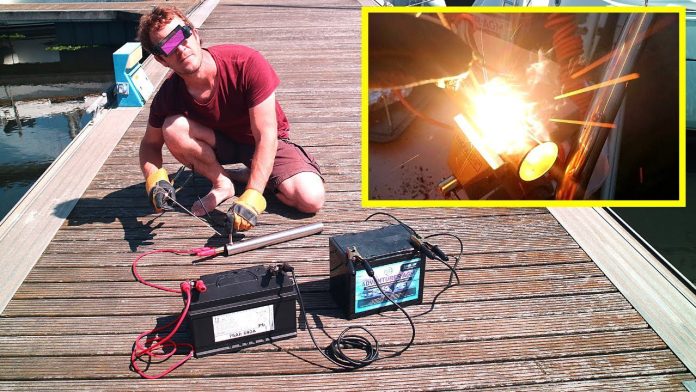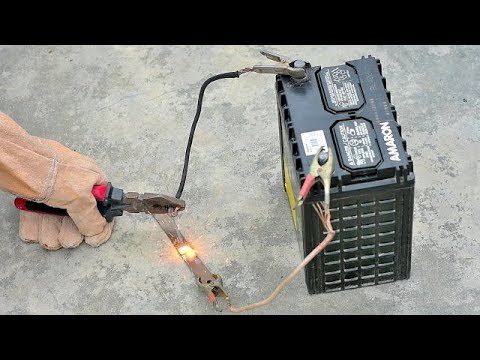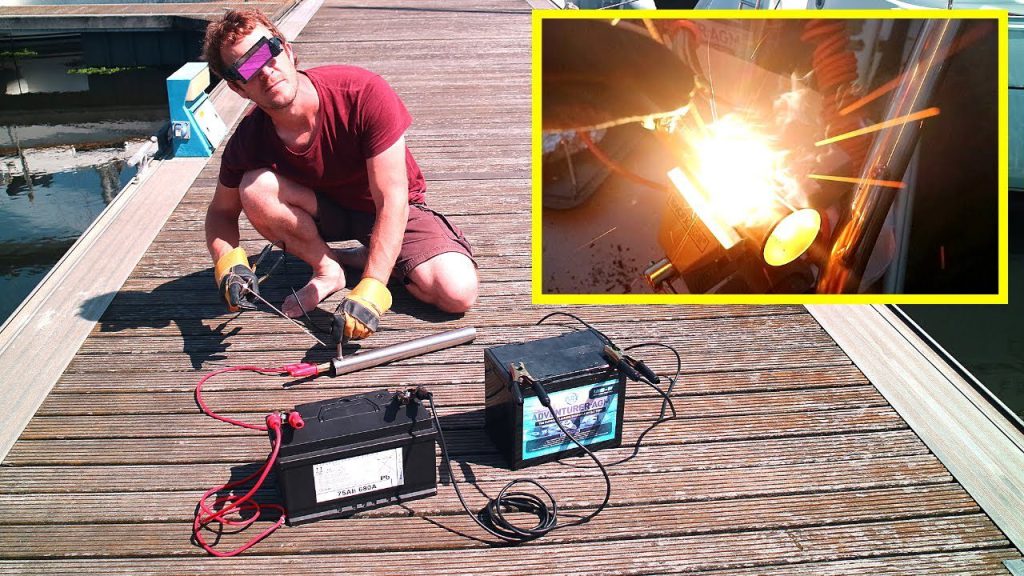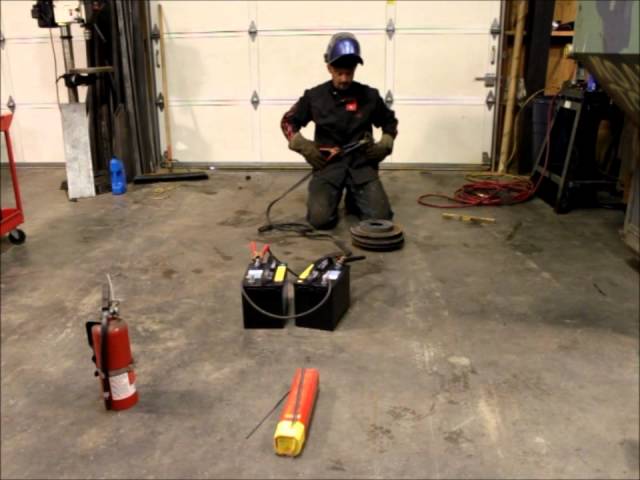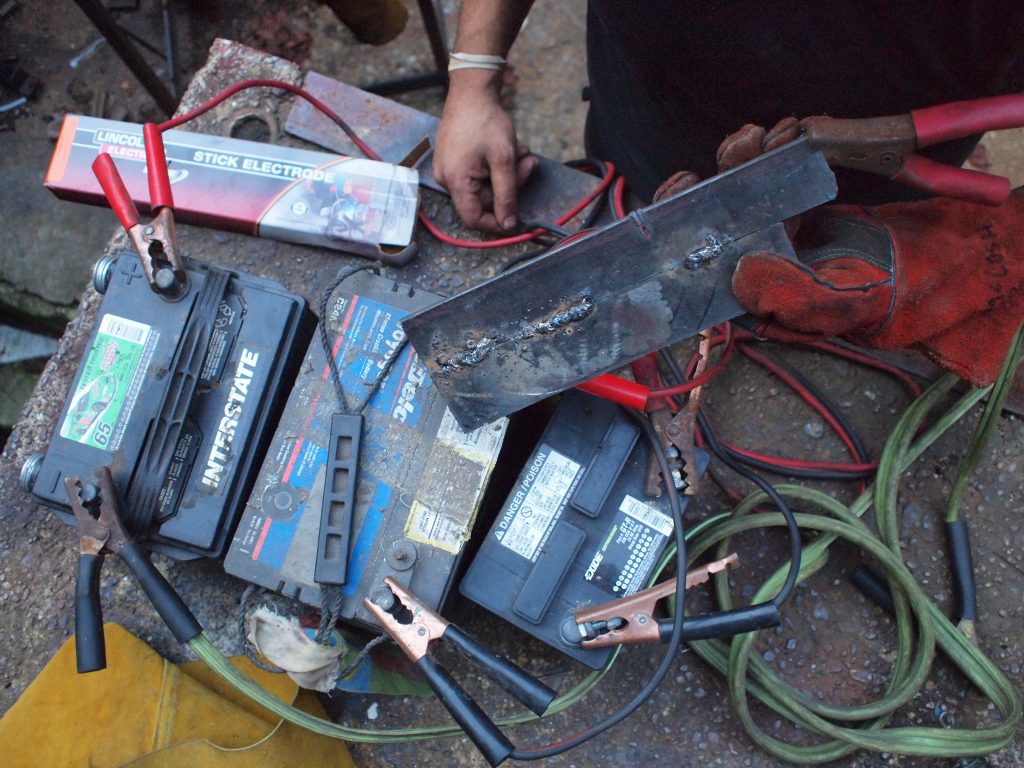Have you ever wondered if you can use a car battery for welding?
In this article, we will explore the possibilities and limitations of using a car battery as a power source for welding.
Whether you’re a keen DIY enthusiast or simply curious about the feasibility of this unconventional method, read on to find out if welding with a car battery is a viable option.
Can I Weld With A Car Battery?
Understanding the Basics of Welding
Before delving into whether you can weld with a car battery, it’s essential to have a fundamental understanding of what welding is.
Welding is a process that involves joining two pieces of metal together using heat and pressure. This is achieved by melting the edges of the metal and allowing them to fuse as they cool. Welding is widely used in construction, fabrication, and various other industries.
Components of a Typical Welding Machine
To perform welding, you typically need a welding machine consisting of several vital components. These components include a power source, such as a car battery or an electrical outlet, a welding electrode or wire, and a welding mask to protect your eyes from the intense light and heat generated during the welding process.
Welding machines also often include additional features, such as an adjustable voltage or current control, which allows for more precise welding.
Introduction to Car Batteries
A car battery is a rechargeable device that provides electrical energy to a vehicle’s electrical system. It is primarily designed to start the engine and power the various electrical components of a car, such as the lights, stereo, and air conditioning.
Car batteries typically produce direct current (DC), meaning the electricity flow is unidirectional. This contrasts alternating current (AC), which changes direction periodically.
Power Output of Car Batteries
Car batteries can supply a significant amount of power, typically between 400 and 700 amps, depending on the specific type and size of the battery.
However, it is essential to note that welding requires both high voltage and high current to generate the heat necessary to melt the metal. While car batteries can provide the necessary current, they typically lack the voltage required for practical welding.
In addition, the power output of car batteries is not adjustable, which limits their suitability for many welding applications.
Potential Dangers and Risks
Attempting to weld with a car battery can be potentially dangerous. Car batteries are not designed to be used as a power source for welding and can pose several hazards.
Welding requires a significant amount of current, which can cause a car battery to overheat, possibly leading to an explosion. Additionally, a car battery’s internal acid and explosive gases can potentially cause serious injury if mishandled or exposed to heat.
Pros and Cons of Welding with a Car Battery
While it is technically possible to weld with a car battery, the limitations and risks associated with doing so often outweigh the benefits.
One potential advantage of using a car battery for welding is its portability, as it allows for welding in remote locations where electrical outlets may not be readily available.
However, the lack of adjustable voltage and limited power output make car batteries less suitable for welding applications. Additionally, the potential dangers and risks of using a car battery for welding make it an impractical choice for most welders.
Considerations and Precautions
If you are considering welding with a car battery, there are a few important considerations and precautions to keep in mind. Firstly, it is crucial to ensure that the car battery is in good condition and fully charged before attempting to use it for welding.
A weak or damaged battery may fail to provide sufficient current, resulting in poor weld quality or even damage the welding machine.
Secondly, it is essential to wear appropriate personal protective equipment, including a welding mask, gloves, and protective clothing, to protect yourself from any potential hazards.
Lastly, consulting with a professional welder or seeking guidance from welding equipment manufacturers for further advice and recommendations is advisable.
Alternative Methods of Welding
If welding with a car battery is not a viable option, several alternative methods are available. One popular alternative is using a dedicated welding machine, which is specifically designed for welding purposes.
These machines provide adjustable voltage and current control, allowing for greater precision and flexibility in the welding process.
Another alternative method is using a generator, which can provide a reliable and adjustable power output for welding. Generators are commonly used in construction sites or other areas without access to electrical outlets.
Safety Precautions
Regardless of the method you choose for welding, it is crucial to prioritize safety at all times. Welding involves intense heat, bright flashes of light, and potentially harmful fumes, so it is essential to take appropriate safety precautions.
Always work in a well-ventilated area to minimize the risk of inhaling harmful fumes; wear personal protective equipment, such as a welding mask, gloves, and a welding apron. Additionally, it is essential to be mindful of fire hazards and keep a fire extinguisher nearby in emergencies.
Conclusion
While it is technically possible to weld with a car battery, the limitations and associated risks make it an impractical choice for most welders. Car batteries lack the voltage and adjustable power output required for practical welding.
Additionally, the potential dangers, such as overheating and releasing toxic fumes, pose significant risks to the welder and the surrounding environment. It is always advisable to use proper welding equipment and follow established safety protocols to ensure optimal results and minimize potential hazards involved in the welding process.


